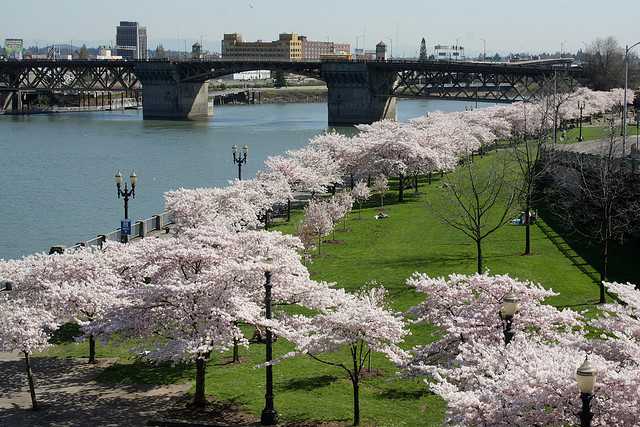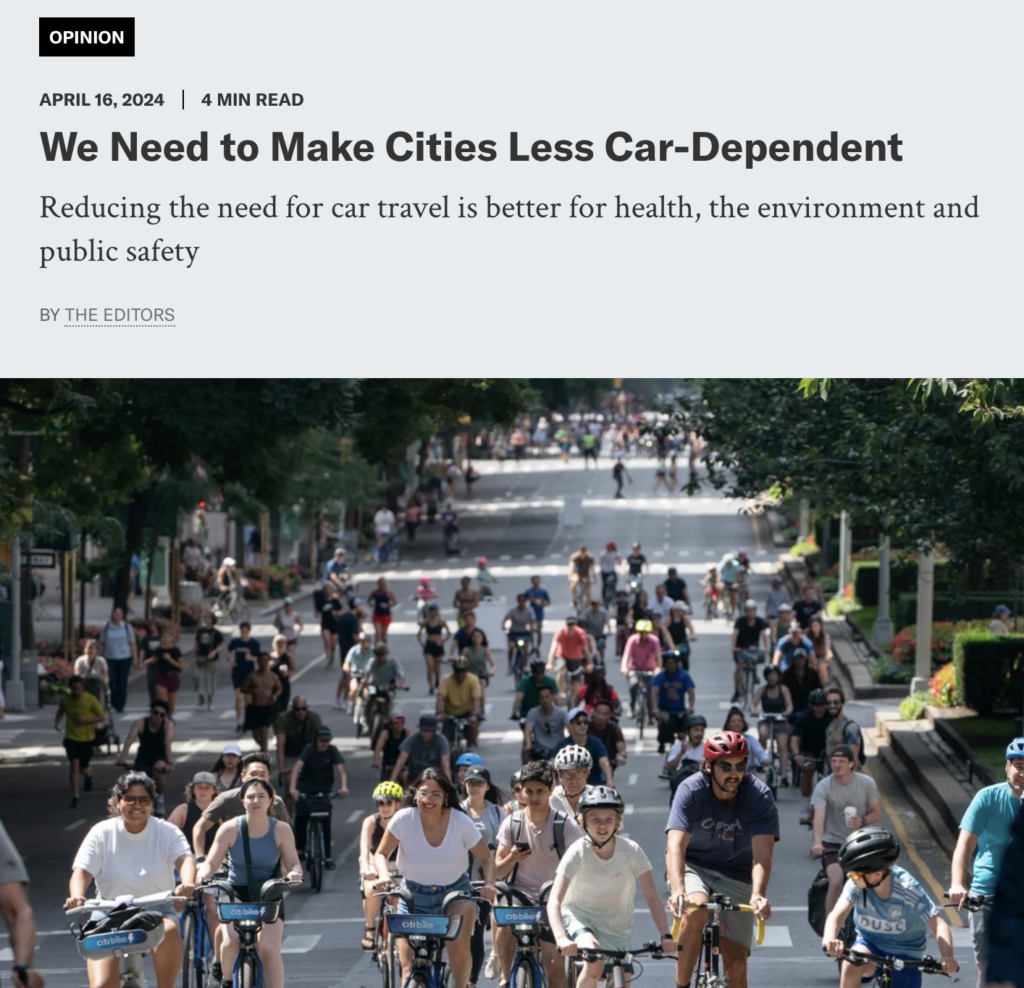What City Observatory Did This Week
Earth Day: Oregon is spending billions to widen freeways in a move that will only worsen the increase in greenhouse gases from transportation. Transportation is the leading source of greenhouse gases in Oregon (and in the US) and unlike other sectors, GHGs from transportation are increasing. That’s the opposite of what’s called for in the state’s much ballyhooed climate plans.

And Oregon’s Department of Transportation is doubling down, planning to spend more than $10 billion widening highways in Metro Portland, a measure that will only increase greenhouse gas emissions, and further lock the region’s into decades of unsustainable, car-dependent transportation, at exactly the time when investments in lower carbon living are needed. Freeways are fossil-fuel infrastructure.
Must Read
Science says: Make cities less car-dependent. Scientific American has a bold editorial, eschewing the usual “technical fix” ideas for solving climate change, and arguing that a linch-pin of climate policy has to be about making cities more livable, walkable and bikeable. 
This opinion piece nicely makes the connections between transportation and land use, calling for fundamental changes in how we travel, and building communities that enable less car dependence.
We could eliminate free parking. We could set up congestion pricing in dense city centers, as New York City plans to do, and use the proceeds to fund public transit alternatives. And we can add more bike lanes and open streets, which are cheaper to put in place and provide immediate benefits.
In much of the U.S., it is still illegal to build anything denser than single-family homes, and housing often has minimum parking requirements that take up valuable real estate. If we encourage cities to build duplexes, triplexes and apartment buildings, especially near transit hubs, fewer people will need cars.
Car dependence is deeply rooted in policies and institutions, and is so pervasive that it blinds many of us to the opportunities to rethink the way we live, as opposed to simply try to tweak technology to avoid deeper and more lasting change.
A warning about the effects of “inclusionary” housing requirements, Seattle edition. Seattle is considering a major revision of its comprehensive plan, and Sightline’s Dan Bertolet has some keen analysis and sage advice, focusing mostly on how to expand housing supply: getting rid of parking requirements, allowing more apartments in more places, and promoting “middle housing” are all keys. And when it comes to middle housing, Bertolet has an important warning: don’t burden small-scale, price-sensitive housing with inclusionary requirements.
For several years, Seattle has imposed a “Mandatory Housing Affordability” (MHA) requirement on new multi-family housing in many city neighborhoods. In effect, MHA functions as a tax on new apartment construction (either in the form of requiring below market rents on some units, or an alternative cash payment to the city). The negative effect on new construction clearly shows from data about Seattle’s MHA program:
Bertolet concludes:
imposing MHA with Seattle’s future middle housing upzones would undermine the intent of the upzoning in the first place. It would suppress middle housing construction, depriving residents of less expensive housing choices and prolonging the city’s dire housing shortage that harms those with the least, the most. Seattle policymakers can maximize all the benefits of middle housing with one simple move: don’t impose MHA on it.
Optimal Serendipity. Writing at “The Deleted Scenes” Addison Del Mastro has a keen observation on the deep monetary and personal costs of exurban living. When things are so spread out, every destination can be had only at a considerable cost in time and travel expense, and this of necessity requires planning and circumscribes what one can do. As he writes:
There is simply no way to capture that whimsy and serendipity of hey, I got home a little late, let’s go out to dinner tonight! without a certain amount of density to support a sufficient number of enterprises. Density is proximity. Proximity is serendipity. Distance is loneliness and isolation. We want all of these things at once—a choice of restaurants and shopping, wide empty roads, free easy parking right in front of every destination, large houses with private yards—but we simply can’t have all those things.And while density may not guarantee them, they are not possible without it.
The density of desirable destinations, of opportunities to do things, to meet people and have abundant choices are the hallmark of great cities. It’s an insight that’s overlooked in the quest to find cheaper housing in the “drive til you qualify” exurbs.
In the News
City Observatory’s Joe Cortright is quoted in The Oregonian‘s coverage of Earth Day, looking at why the state is failing in its efforts to reduce transportation greenhouse gas emissions.
I don’t think we’re being honest with ourselves about how little progress we’re making on greenhouse gasses and climate. And we’re not being nearly ambitious enough in thinking about how we can change how things work.”


